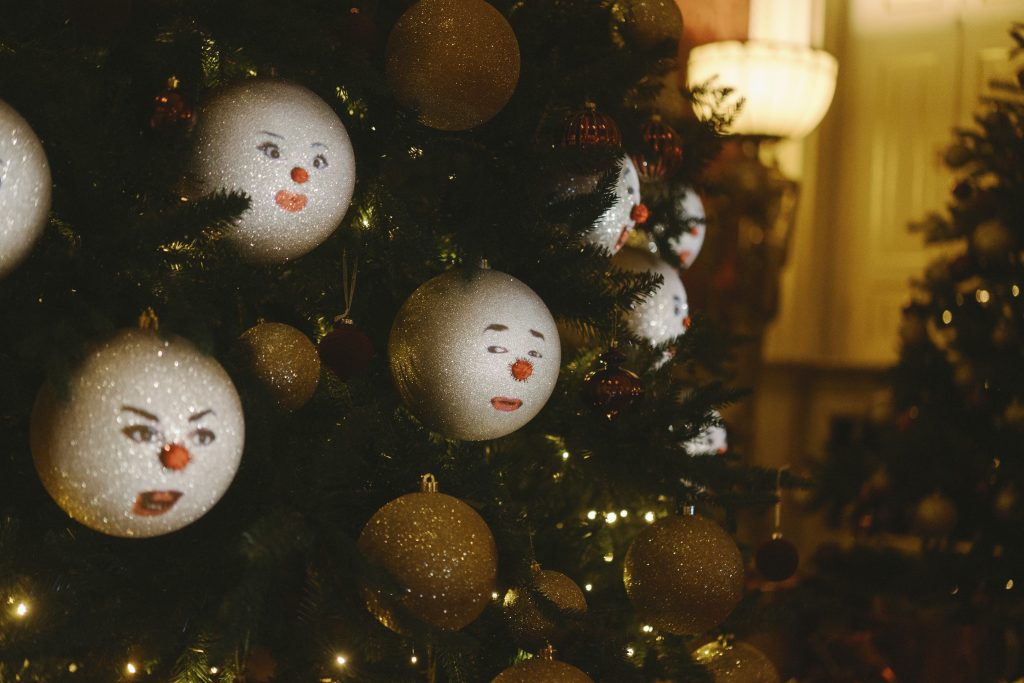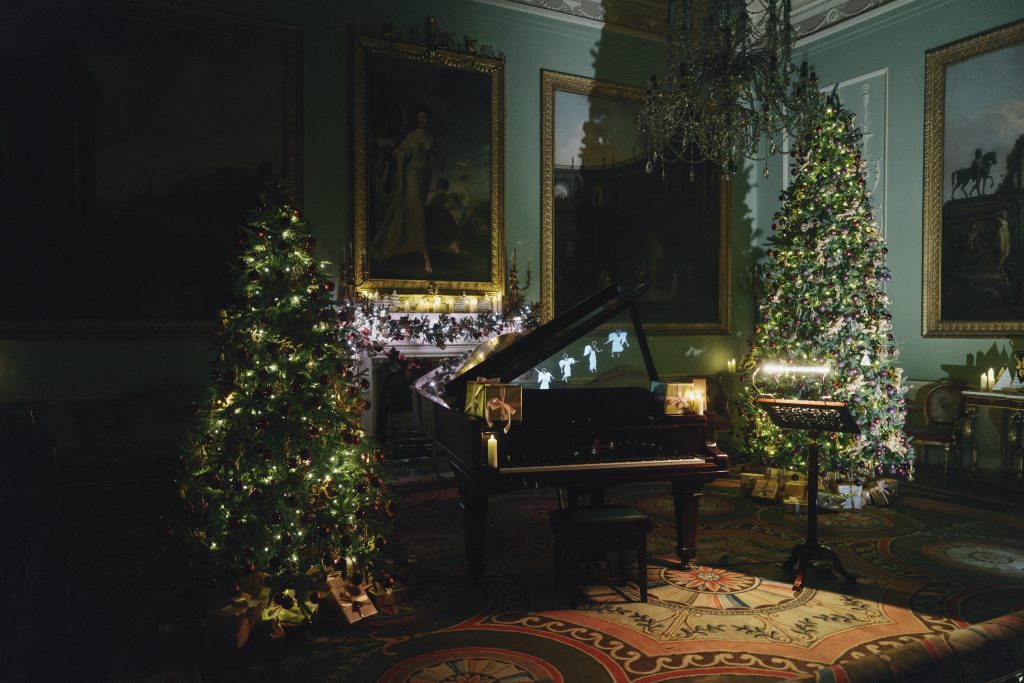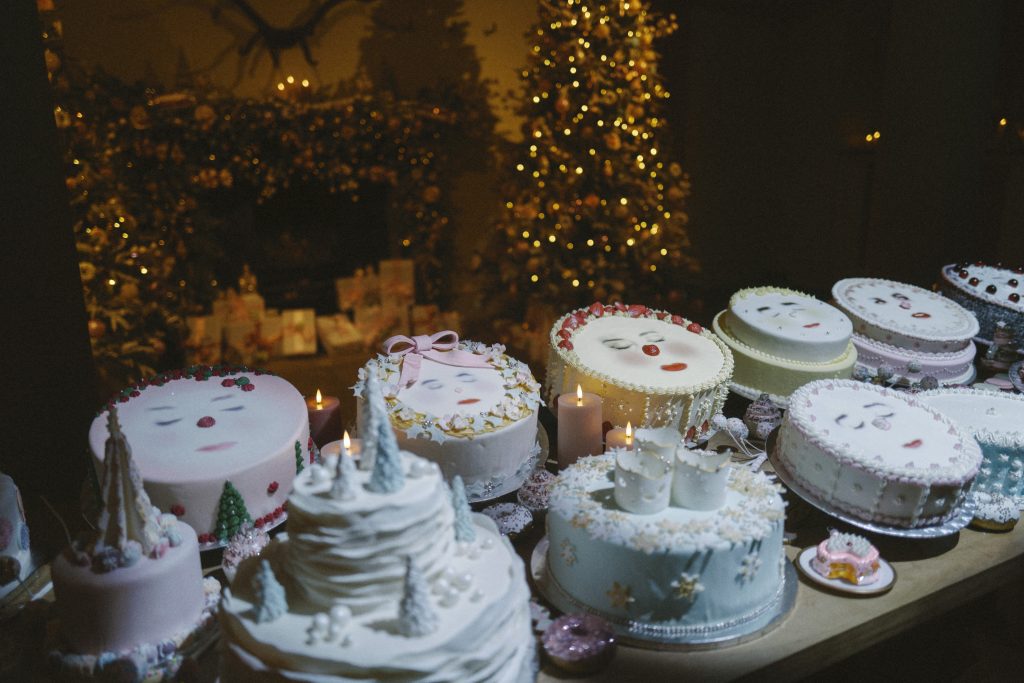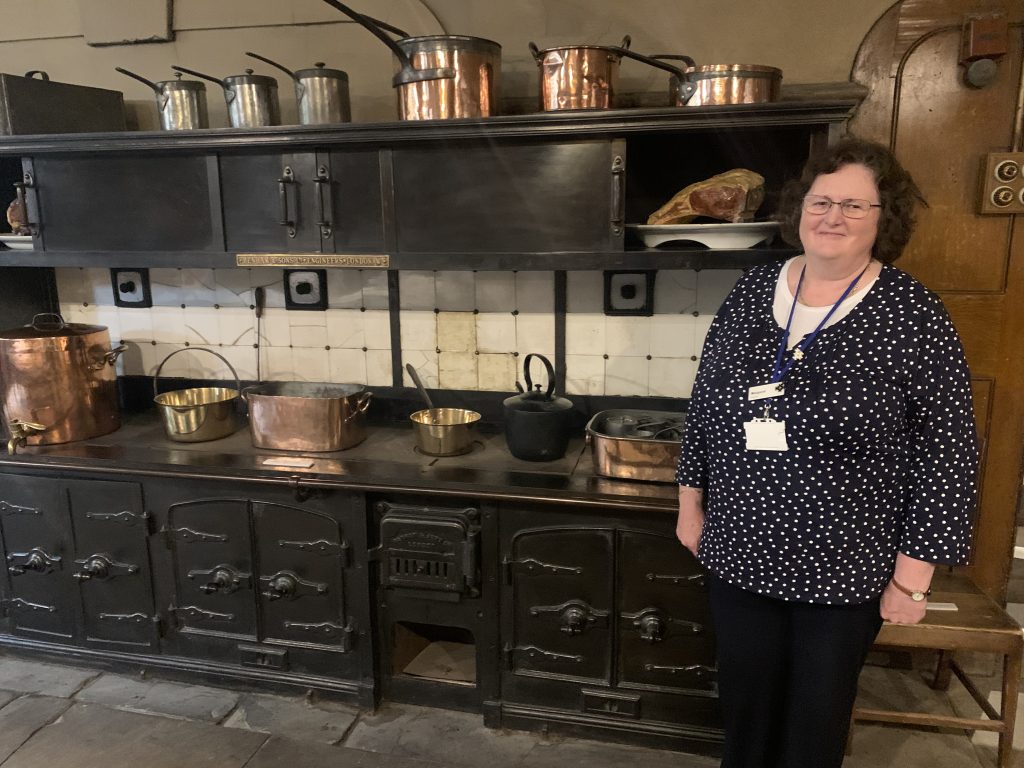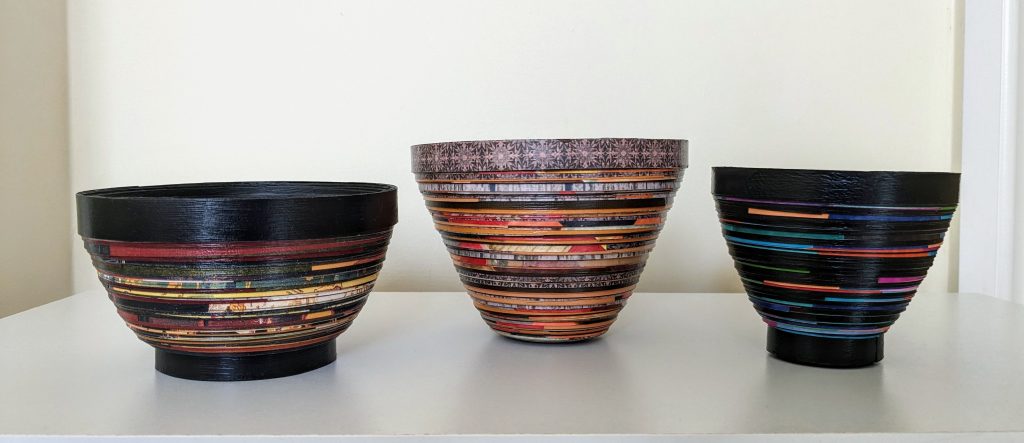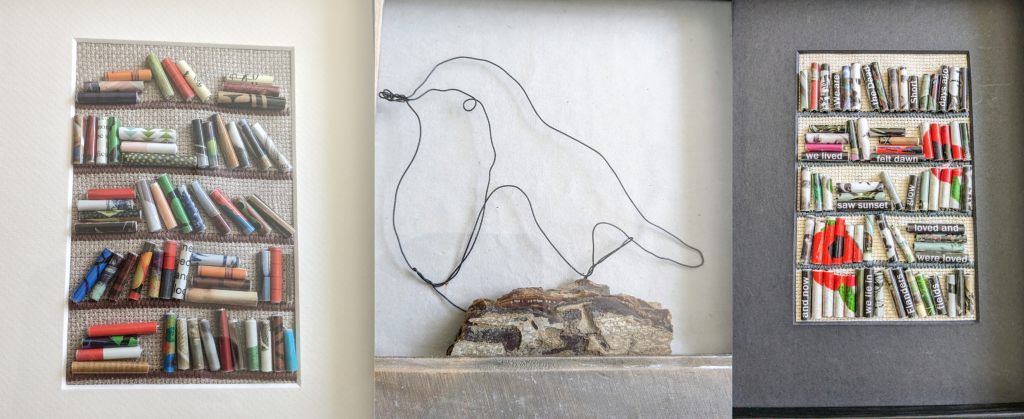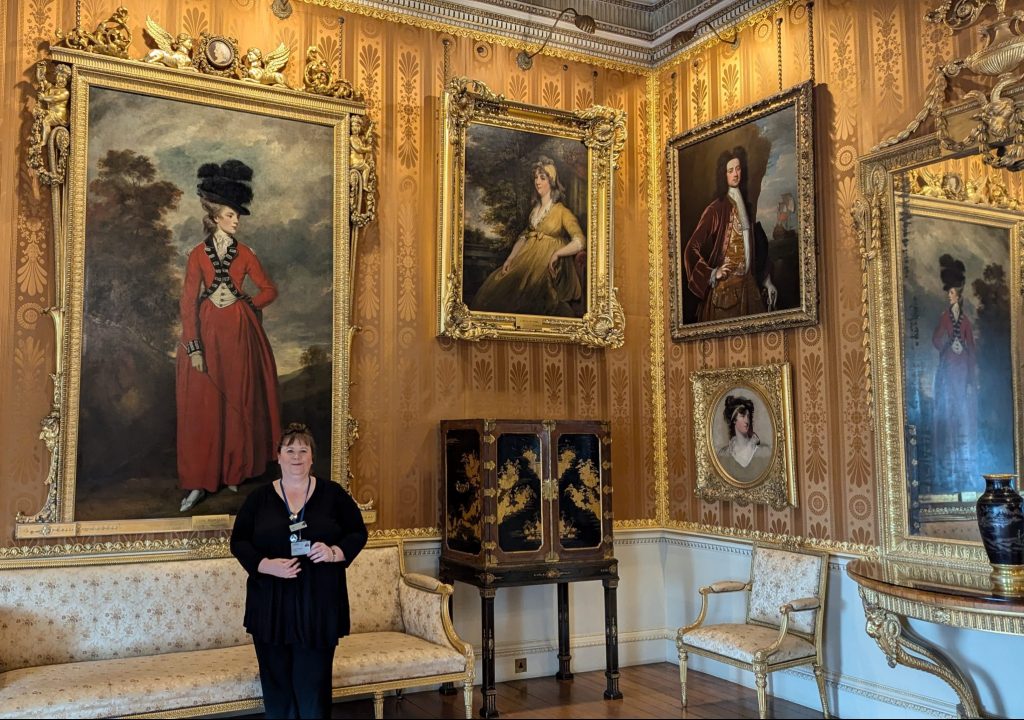We had the pleasure of catching up with Christina Lewis, the brilliant Scriptwriter behind Mischief at the Mansion. Her imaginative storytelling is the heartbeat of this year’s enchanting Christmas experience. From mischievous characters to magical moments, Christina’s words bring the festive world to life.
In this interview, she shares a glimpse into her creative process, the inspiration behind the story, and what it’s like weaving wonder and mischief into the halls of Harewood.
Hello Chrissie, please could you start by introducing yourself and your relationship to Studio McGuire?
I’m Chrissie and I’m a scriptwriter.
I first met Davy and Kristin when we were both working on Hull 2017 UK City of Culture. I was working on a project called The Land of Green Ginger for which they created Micropolis – a stunning miniature city in an old Hull pumping station.
I was also working on another script at the time, which they read and liked – we then worked together on the inaugural Harewood event A Night at the Mansion, Speci/men, which went to Belfast University in 2020, and Sirens which was produced by Absolutely Cultured in 2021.
Writing’s such a lonely process that it’s just a joy to work with people who are so creative with such a strong vision and aesthetic; you just know they’re going to make everything look and feel gorgeous and special.
What inspired the storyline for Mischief at the Mansion, and how did you start crafting the narrative?
I think the best experiences are always those that work on different levels – you ideally want to create something that children are totally enchanted by, with some of the more grown-up stuff going over their heads while the adults smile knowingly.
I think Mischief at the Mansion does that beautifully, right from the opening when you walk into this breathtaking music room with the painted ceiling and then you’ve got angels running amok on the piano using it as a trampoline! Who doesn’t want to see the house in total confusion over some cheeky escapee angels? It also gives that light-touch conflict that’s so important in storytelling – we need something for the other characters to complain, laugh, wonder and unite in annoyance about. The angels tie the narrative together, so there’s always that thread to follow as you explore the whole experience.
Davy and Kristin always have a strong idea about what they want before we start chatting – the process usually starts with them coming to me with their vision, and, because not all the rooms have script, we have to be really strategic about where the dialogue fits. After an initial chat about first ideas, I then have a research visit to Harewood where I can look at the rooms, walk around, talk to the team and listen to their ideas. They’re so incredibly knowledgeable and always have some amazing snippets of information that end up being woven into the narrative.
I think it really works for families because if you’re not listening to every word of the script, you’re marvelling at baubles and plates chattering and arguing, watching flowers bloom, or a wedding dress come to life with gorgeous lights and colours – there’s literally something for everyone to enjoy.
What was the collaborative process like with the Harewood team?
The Harewood team are amazing! They’re so passionate about the house and know so much about the history and objects in the collections – I have to give a special shout out to Curator and Archivist Rebecca Burton and Head of Public Engagement Zoë Hughes, who were so helpful taking time out to chat to me, recommending books and websites for research and answering A LOT of questions over email.
I really love the research visits because I get to take in the whole atmosphere of Harewood, and having something with you who can say “This is where Queen Victoria slept” or “do you want to look at some watercolours by Charlotte Canning?” is such a privilege. These are the kind of conversations that lead to the story becoming richer and more nuanced.
Sometimes it can lead to a whole scene – like in the Spanish library between George Canning and Queen Victoria – or sometimes a half day of research will be summed up in a couple of short lines of dialogue like the plates in the dining room discussing the Queen Marie Antoinette tea service, which is obviously a huge story condensed into a really short chat. I try and strike a balance of general chatter between characters and really leaning into the fascinating history of the house.
From first chats to sending the final draft of the script, it’s a really lovely collaborative process where we share the script back and forth until we get the right balance of humour, historical accuracy and what’s technically possible.
Mary: Did you hear the cakes on the way up? That big pink one’s a bit full of herself.
Harry: Don’t be fooled, it’s all hot air. They’re a bag of nerves really, just sitting there, waiting to make their big entrance and be picked over and chosen – or not. Do you remember that time Lady Louisa sent a blancmange back Below Stairs because it had too much wobble? Poor thing never recovered.
Barry: The Queen Marie Antoinette tea service was laughing for days! I could hear the saucers tittering from downstairs.
Terry: Must be nice for them to laugh after what they’ve been through, poor things.
Can you tell us about some of the mischievous characters we’ll meet during the experience?
All I can say is – keep your eyes peeled for some very cheeky little angels who keep popping up where they shouldn’t! They’ve escaped from the Christmas tree in the Long Gallery – much to the consternation of the singing, chattering baubles who were their decorative neighbours – and they’re currently engaged in annoying everyone they can as they zoom round the house causing festive mayhem.
All the scenes were incredibly fun to write, but I do have a soft spot for the baubles and the cakes – especially the cheeky Lemon Cake and rather droll and no-nonsense Victoria Sponge. I feel really at home in the Below Stairs areas – that’s definitely where I would have been 100 years ago! – and there’s something very intimate and a little bit sad about seeing all these incredible cakes preparing to be whisked upstairs to their ultimate destiny.
Lemon: (coughs) I hate to interrupt this chat, But the time has nearly come – Who’ll still be here in half an hour, and who’ll be just a crumb…?
Black Forest: Ah, it’s an emotional day. Everyone’s in tiers. Tiers! Geddit?
Cake 1: Deep breaths everyone! DEEP BREATHS!
Cake 2: It’ll be fine. My cake, cake, cake grandmother sunk in the middle and got left out for the starlings. Can’t be worse thanthat, surely?
Finally, how do you hope visitors feel or react as they experience Mischief at the Mansion?
I just really hope it brings a bit of Christmas magic. Word of advice though; check your pockets and bags, because the angels are always looking for new homes to cause mischief in…
Mischief at the Mansion is open until Sunday 5 January 2025
Are you ready for some magic?
